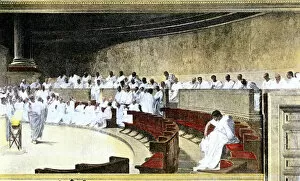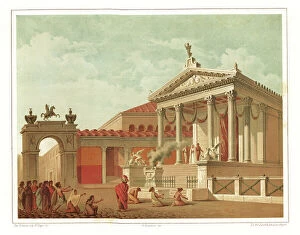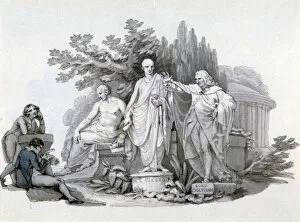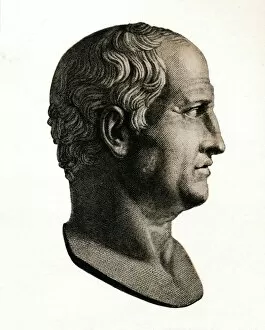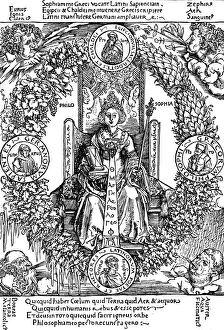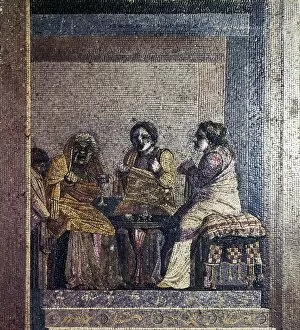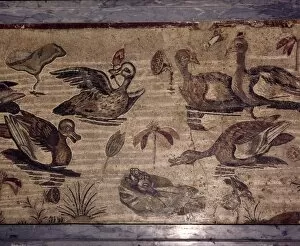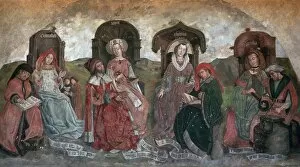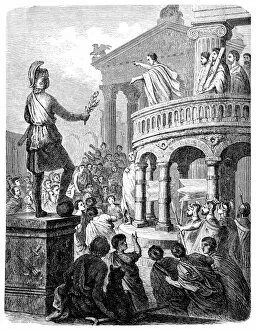Marcus Tullius Collection
Marcus Tullius Cicero, a name that resonates throughout history. Born in 106 BC, he was a Roman scholar, writer, and statesman who left an indelible mark on ancient Rome
For sale as Licensed Images
Choose your image, Select your licence and Download the media
Marcus Tullius Cicero, a name that resonates throughout history. Born in 106 BC, he was a Roman scholar, writer, and statesman who left an indelible mark on ancient Rome. His brilliance is captured in the intricate Roman mosaic of Scene from play with masked actors found at the Villa of Cicero in Pompeii. Cicero's eloquence and oratory skills were legendary, as depicted in the captivating artwork by Dioscurides of Samos - a Roman Mosaic from Pompeii showcasing ducks and frogs frolicking in a water garden. Just like these creatures peacefully coexist, Cicero aimed to bring harmony to society through his speeches. However, not all moments were serene for this influential figure. The murder of Cicero remains shrouded in mystery even today; an event that forever silenced one of Rome's greatest minds. Yet his legacy lives on through various artistic interpretations such as the haunting depiction created by an unknown artist in 1890. Cicero's impact extended beyond his own time period. Two youths contemplating statues of Demosthenes, Cicero, and Pitt symbolize how his ideas transcended centuries. Even artists like John Leech couldn't resist capturing his essence - whether it be throwing up his brief like a gentleman or denouncing Catiline with fervor. In Albrecht Durer's engraving "Philosophia, " we see Marcus Tullius alongside other great thinkers - a testament to his intellectual prowess and contribution to philosophy. His writings continue to inspire generations long after his death. Marcus Tullius Cicero was more than just a historical figure; he embodied the ideals of wisdom and justice during tumultuous times. From delivering powerful speeches against corrupt politicians to advocating for societal harmony, he left an enduring legacy that continues to captivate us today.

